To an outsider, the agricultural community is forced to endure a mundane existence. From their perspective, a seed still germinates as it always did. Harvest is the gleaning of a mature crop, and the composition of what city people call “dirt” but what we know as “soil” has stayed the same since the beginning of creation.
To the urbanites’ credit, there is some truth in their assessment of agriculture, but only from a 30,000-foot view. The fertile fields of America are nothing but flyover country to some. Yet, it hides a treasure trove of technological innovations that are unrivaled anywhere else.
As the old saying about a wedding goes, there is something old and something new.
No land is being made, but productive farmland is being lost to development at a frightening rate. Juxtaposing this, the world’s population is expanding at an alarming speed: more mouths to feed and less land to accomplish that.
The only way to combat this is to completely rethink the aspects of agriculture that cannot be changed while introducing a new approach. This will allow more food to be grown on less acres. It will limit the impact on the environment and soil structure while aiding the financial viability of those that provide the sustenance, we all require.
Please join me as we celebrate seven recent advancements that have changed how we farm for the better:
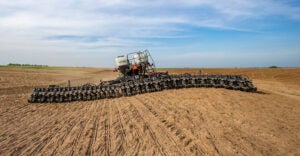
1: The elimination of planter pinch-row yield loss
The problem of soil compaction becomes exacerbated by the use of larger and heavier tractors and planters. The damage from the planter’s tires as they travel across the field is especially detrimental to the soil structure. It is identified as pinch-row compaction.
Pinch row compaction is the space on either side of a row of corn in which a wheel of a tractor, planter, or some implement travels after the seed is placed in the ground. This compaction creates challenging conditions for germination, emergence, and root exploration.
Pinch-row compaction is specific to today’s large center-fill planters. The “pinch rows” are the center six rows. This means that 25 percent of the rows are pinch rows. On a 12-row center-fill planter, 50 percent are pinch rows.
Depending on the soil structure and moisture when planting, corn planted in the pinch rows can yield up to 30 percent less than the other rows.
The Fendt Momentum planter was designed to almost eliminate the pinch rows by utilizing in-line tandem wheels. Another design element is an automatic tire pressure regulation system to maintain the optimum setting as the planter’s weight changes.
In addition, the Momentum features an automated weight transfer system as the field’s topography deviates.
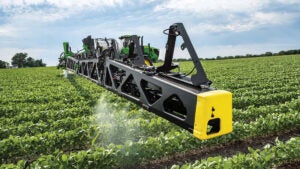
2: Herbicide applied only to the weeds
Anyone who has ever sprayed a field knows herbicide is often applied where it is not required. This wastes expensive chemicals and, over time, has the potential for a negative environmental impact.
The John Deere See and Spray system eliminates that by employing application-specific cameras to look for and identify where the weeds are. At 15 mph, the cameras update 20 times per second and instantly reference a database of over 1 million images.
Through its machine learning function, the system decides what plant needs to be sprayed and what herbicide to use from its dual tanks.
The John Deere See and Spray system delivers spray efficacy that could never have been imagined only a few years ago.
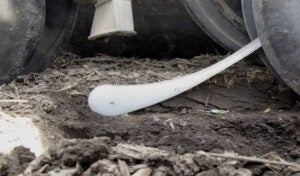
3: Improving seed-to-soil contact
Seed-to-soil contact is essential for quick germination. Modern planters do an excellent job creating the seed trench; efficient closing wheels fill the furrow. But the seed may be placed in the trench with limited contact with the floor below it. This air pocket impacts the corn plant’s entire life and yield potential.
Recognizing this, the Keeton Seed Firmer was developed. It is an ingeniously simple and inexpensive device that attaches to each planter row unit. Once the seed has been placed, the Seed Firmer gently presses on it. This eliminates air pockets and assures seed-to-soil contact.
The latest version of the Keeton Seed Firmer also allows for the in-furrow application of liquid fertilizer, if so desired.
4: Minimizing soil compaction from center pivot irrigation
With the introduction of the Shark Wheel, the old saying there is no need to reinvent the wheel can finally be put out to pasture! The airless, high-traction, DNA helix-shaped Shark Wheel eliminates flat tires and minimizes soil compaction as it travels through an irrigated field.
Whereas a standard pneumatic tire on a center pivot system can create a trench nine inches deep or more, the Shark Wheel leaves a footprint of only around two inches.
This design is so soil-friendly that crops will often be seen growing back in its path. And the Shark Wheel is built with replaceable paddles that can be changed in less than 60 seconds if one gets damaged.
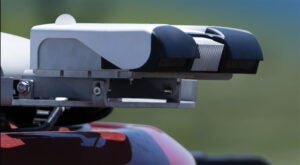
5: The plant’s real-time requirement of foliar applications
Preside-dress soil sampling, along with either tissue or sap testing, are all excellent to employ before any foliar feeding of your crop is done. The only issue with those procedures is that the sample needs to be sent to a lab; at best, the results may take a week or more to receive.
The data provided is accurate … for when the sample was taken and not for the day you want to foliar feed. It is an agronomic version of reading last week’s newspaper.
What if you could equip your sprayer with real-time multispectral cameras that analyze the plant’s requirements 50 feet ahead and then apply the proper amount of required nutrients?
You give the plant exactly what it needs to yield the most while controlling your input costs. Sounds like something you could only wish for, until now.
The Augmenta Precision Farming System can be retrofitted to almost any self-propelled or pull-type sprayer and does precisely that. It uses unique cameras to perceive the crops’ needs, analyze their requirements, and then control the amount of product applied.
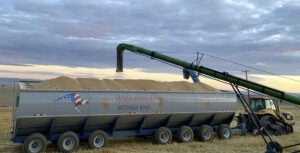
6: Improving harvest efficiency
You have only a few choices when it comes to improving harvest efficiency: Add more combines or trucks to the harvest crew. All are costly and still require a person to operate the machinery.
The farmers of Australia faced these same issues about a decade before we did in North America, and they came up with an ingenious idea.
In-field portable storage that allows the grain cart or combine to empty into it. At the same time, a truck can load on the other side, letting the combine run continuously.
This movable system is called a Walkabout Mother Bin and is made here in the U.S.
The Walkabout Mother Bin offers either 4,000- or 6,000-bushel portable, towable storage that can be placed on the edge of the field or the side of the road. It’s a cost-effective means to drastically improve your harvest efficiency.
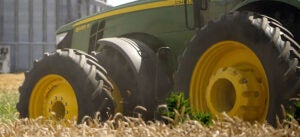
7: Reducing soil compaction from field traffic
You must drive on the field with tractors, equipment, and trucks. Each time you do, the soil is damaged and compacted, resulting in less yield, poor water infiltration, and a lack of oxygen for the crops that grow in the traffic area.
Though the first pneumatic tires were a big step forward from steel wheels, other than radials, nothing much changed in the tire world.
That was until Michelin invented the IF and VF tire. Now, every major tire manufacturer offers these designs.
IF (increased flexion) identifies a tire design that can carry 20 percent more weight than a traditional tire at the same pressure. VF (very high flexion) tires offer 40 percent more load capacity at the air pressure of a standard tire.
Tire air pressure impacts not only the weight the tire can support but also the soil compaction. The higher the tire pressure, the greater the compaction. Thus, IF and VF tires allow the farmer to use 20 or 40 percent less tire pressure, respectively, than a conventional agricultural tire if no more weight capacity is required.
IF and VF tires trick your soil into thinking that substantially less weight is being applied to the ground than actually is occurring.
Ray Bohacz, a technical writer in both the automotive and agriculture industries, is the creator the Farm Machinery Digest website and the Idle Chatter podcast. He has more than 3,000 published articles and has been featured in nearly 50 publications.


